Hydroponics is a hot topic in gardening circles, and perhaps you are thinking of trying it out for yourself this growing season.
Many gardeners are building hydroponic systems because of their endless benefits, and you are not wrong if you want to build one too.
However, you may be discouraged, as hydroponic systems are quite expensive to build. Are there less expensive systems that you can build? Read this article to learn some tips for building a cheap hydroponic system.

Table of Contents
1. Consider Simple Hydroponic Systems
The first tip to make hydroponics cost-effective for you is to build a cheap type of hydroponic system. While you will spend money on every system, you can eliminate the use of some items in some systems.
For example, you do not need a pump in wick systems and deep-water culture. You may choose not to use an aerator in the nutrient film technique.
Just remember that if you want to start a commercial hydroponic garden, eliminating the use of pumps and aerators can cost you the health and productivity of your hydroponic plants.
2. Buy and Use Only What You Need
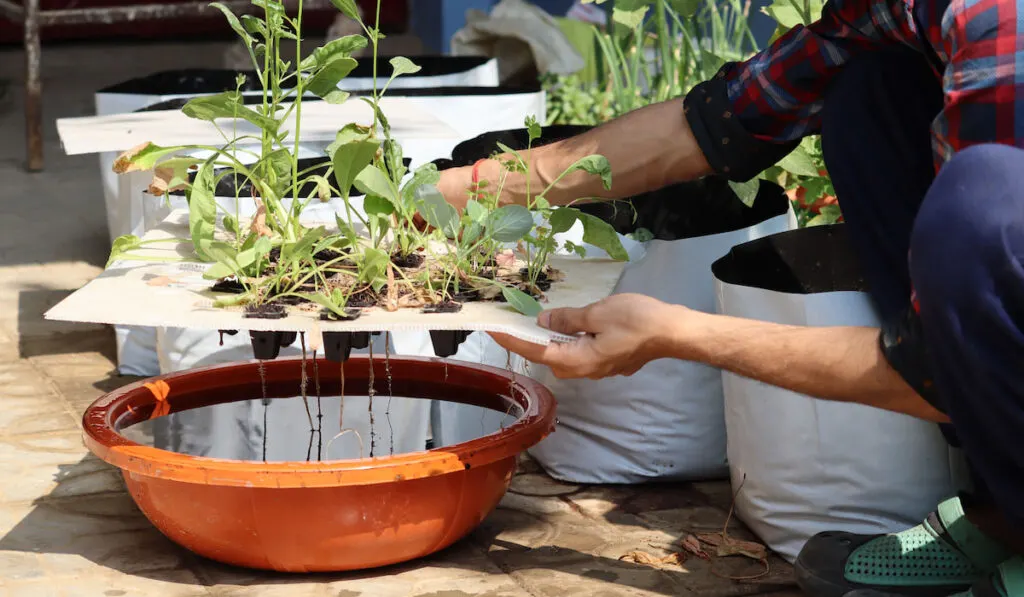
What you need depends on the type of system that you are using. For example, people who plant in deep water culture do not need a pump.
Before you start buying your tools and materials, sketch out your hydroponic system and write the use of every tool or part of the system. You may be surprised that there are some things that you do not need.
Also, aside from your water quality reading kit, pumps, and aerators, you may already have items to repurpose as parts of the hydroponic system at home. Try as much as you can to minimize your spending.
3. Use Local Stones as Your Grow Media
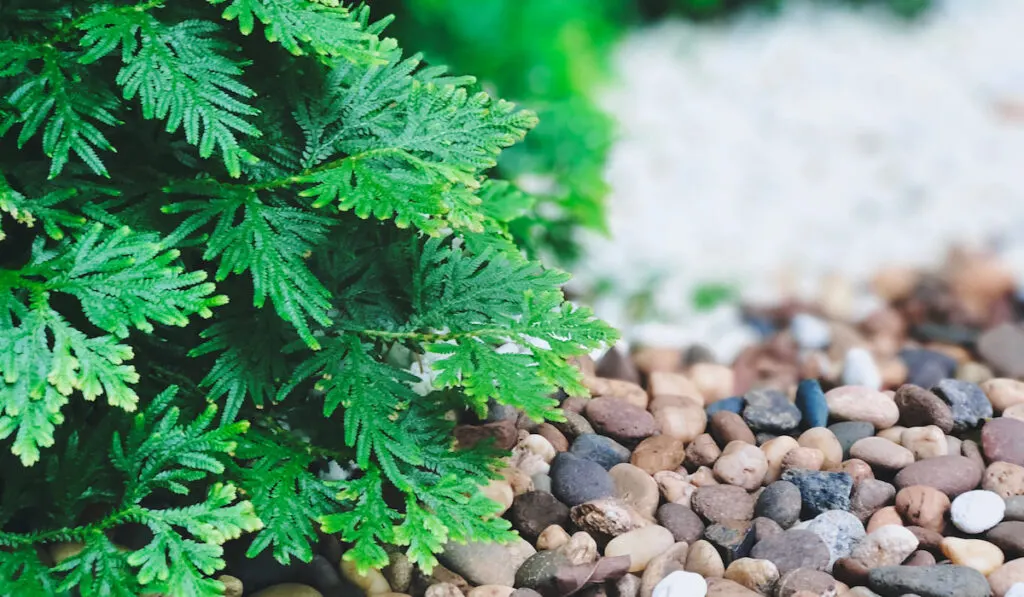
The grow media is very important, as the roots of your hydroponic plants need something to anchor onto. Many people buy their pebbles or pellets from stores.
However, you can choose to search around your home for clean and smooth rocks that you can use.
The downside of using local rocks is that they are heavy and will add to the weight of your hydroponic system significantly.
If you choose to use local stones, wash them multiple times so that you do not introduce microbes to your hydroponic system.
4. Grow Plants That Are Suitable for Your USDA Hardiness Zone
Growing plants that are suitable for your USDA hardiness zone will save you a lot of operating costs.
Many hydroponic farmers spend so much on heaters, air conditioners, humidifiers, or dehumidifiers.
The reason why farmers spend a lot on these products is that they want to control the atmospheric condition of the room to match the needs of their plants.
If you grow plants that can grow easily in your USDA hardiness zone, you do not need to change the room’s atmospheric condition.
Which plant would you like to grow? Can you grow the plant outside in your regular garden? If so, you can grow the plant indoors without changing the temperature and humidity of the room.
5. Rely on Sunlight for Light and Warmth

Buying and powering grow lights is also expensive, so reduce your use of grow lights. It is possible in a low-scale garden where you do not stack a row of plants above another row.
Most plants will grow fine when they get at least six hours of sunlight daily.
If your hydroponic plants (which are usually indoors) do not get as much sunlight as they need, you can add some grow lights.
The point of this tip is to reduce the use of grow lights and rely more on the sun.
6. Make Your Own Hydroponic Fertilizer
Hydroponic fertilizers are quite cheap, but you can spend less money by making your fertilizer. Making a liquid fertilizer is easy so long as you have the time.
You can make use of coffee grounds, worm castings, compost, or any nutritious and organic product that you have to make your own hydroponic fertilizer.
Pour your finely ground organic product into a bucket of water and constantly aerate the mixture for two or more weeks. After two weeks, sieve out the solid particles in the solution and sterilize the solution by heating or boiling it.
Note that you will most likely add some supplements (such as iron and potassium) because most organic products may not have all the nutrients that plants need. You will need to test your solution to determine which supplements to add.
7. Use Only Quality Materials and Tools
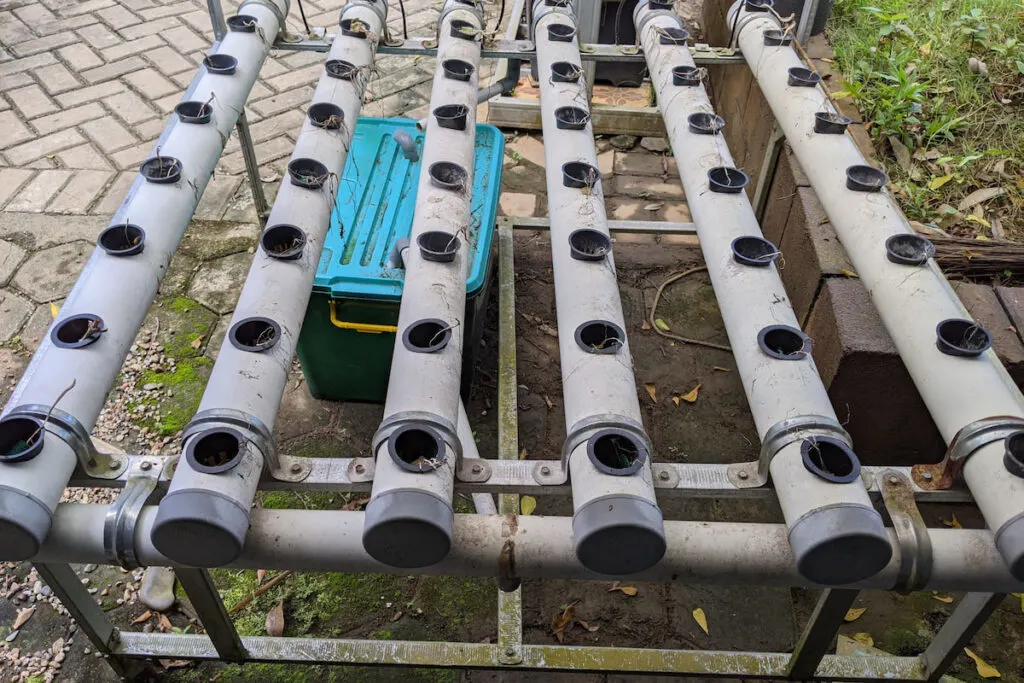
Do not give in to the temptation of buying cheap tools or products. If you buy cheap materials, you may spend more on maintaining or replacing them.
The best thing to do is to buy quality materials, no matter how expensive they were. Quality materials are more durable and will serve you for a very long time.
3 Types of Cheap Hydroponic Systems That You Can Build
The best way to make your hydroponic journey cost-effective is to build a cheap type of hydroponic system. Some cheap hydroponic systems that you can build are:
1. Wick System
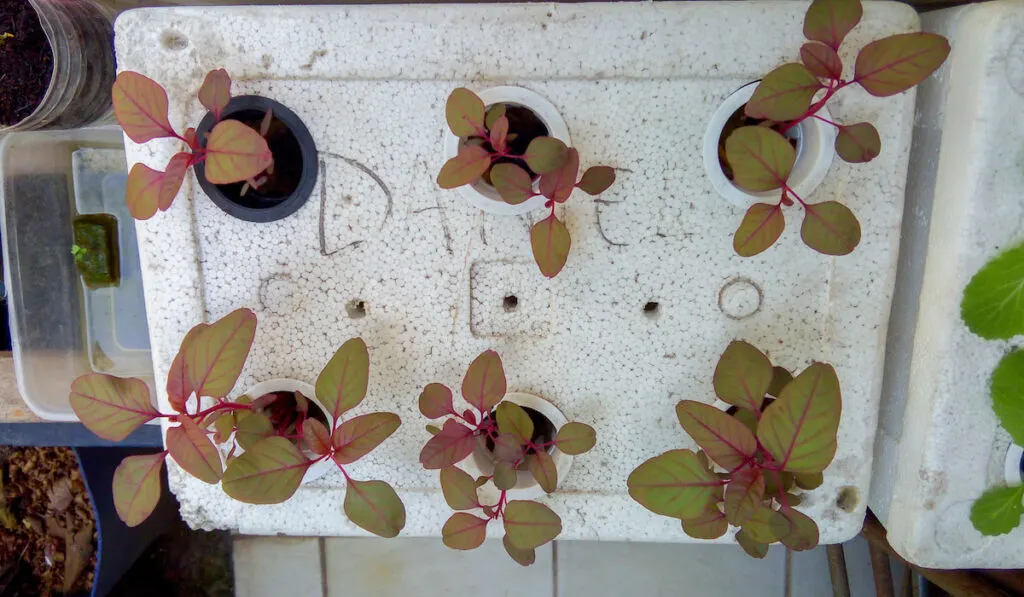
This is a very basic or primitive type of hydroponic system. In wick systems, you do not need a water pump, as the wick can move nutrients from the nutrient reservoir to the plant tray.
The idea of the wick hydroponic system is simply to keep your plant tray (with a loose potting mix) above the reservoir and connect the plant tray to the reservoir with a wick.
So long as the reservoir is not empty, nutrients and water will move up to the plant through the wick. You can make use of a mop head, twisted wool, or any loose fabric as your wick.
You may also build the system to work without electricity if you do not want to use an aerator. However, the use of aerators is important for larger systems.
2. Deep Water Culture
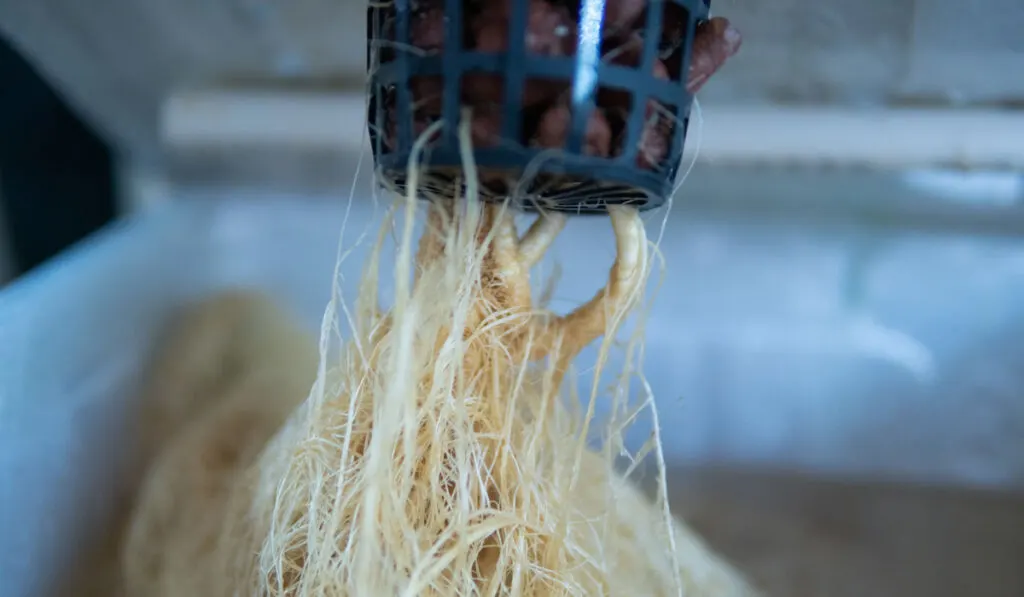
This hydroponic system is just like the wick system. However, there is no wick in this system. Also, the plants are suspended with a floater and are not growing on a tray.
In the deep-water hydroponic culture, the root of your hydroponic plants will be completely submerged in the nutrient mix, so there’s no need for the use of wicks.
However, you need aerators to oxygenate the nutrients so that your plants do not grow in an oxygen-poor system.
If you are using sunlight for your plants, electricity will only be powering the aerators.
3. Nutrient Film Technique
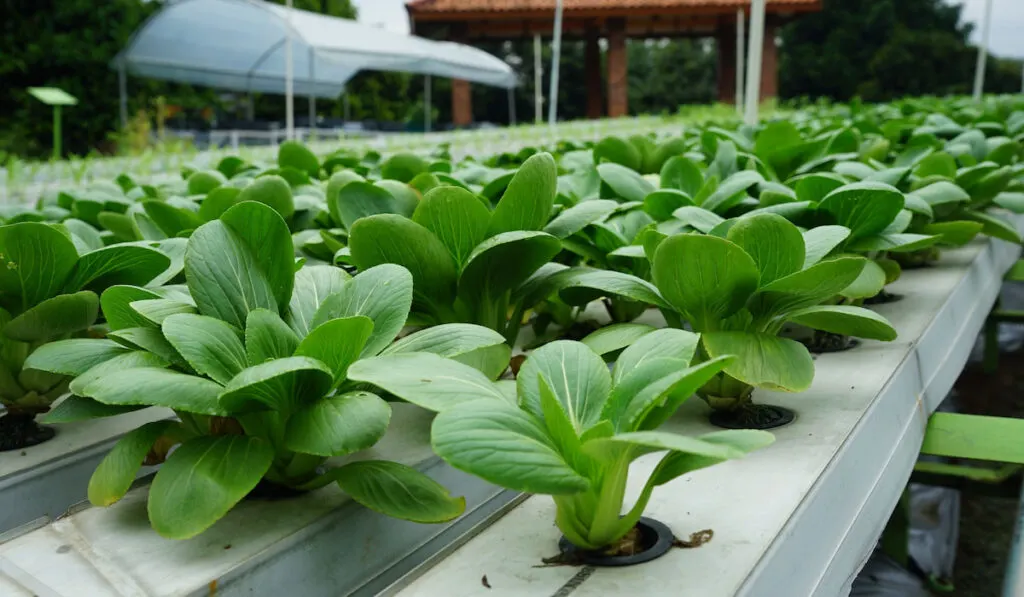
The design of the nutrient film system is quite different from the others, but it is also inexpensive.
For the nutrient film technique, you’ll make use of a pump to move liquids from the reservoir to your plants.
Your plants will grow in net pots which are inserted into holes in a pipe. The idea behind this system is simple: pump nutrients from the reservoir to the upper end of the pipe then gravity will take the nutrients back to the reservoir.
While nutrient flows from one end of the pipe to the other, these nutrients pass through the roots of your plants and your plants will get their needed nutrients and water.
The flow of water aerates it, so you may choose to construct your system without using an aerator. However, the use of an aerator is super helpful and gives you healthier plants.
Conclusion
As you can see, you do not need to spend too much to make your dreams of building a hydroponic system come true.
Remember that even though you want a cost-effective system, you must provide a suitable growing area for your plants.
So long as the needs of your hydroponic plants are met, your costs can be minimal and the results bountiful!
Resources
- https://www.thespruce.com/diy-hydroponic-systems-5093454
- https://www.daringgourmet.com/how-to-make-worm-tea/
- https://www.ugaoo.com/blogs/gardening-basics/how-to-build-a-cheap-hydroponic-system-a-step-by-step-guide
- https://www.wikihow.com/Build-a-Homemade-Hydroponics-System
- https://www.quora.com/How-do-I-build-a-cheap-hydroponic-system
